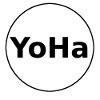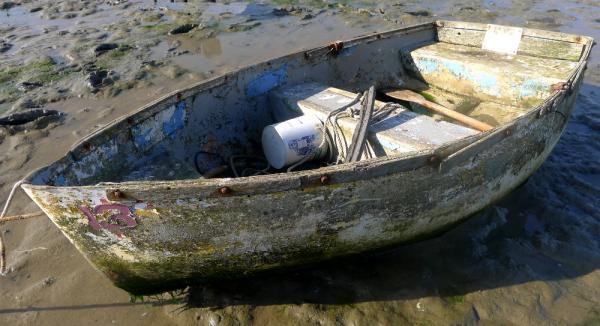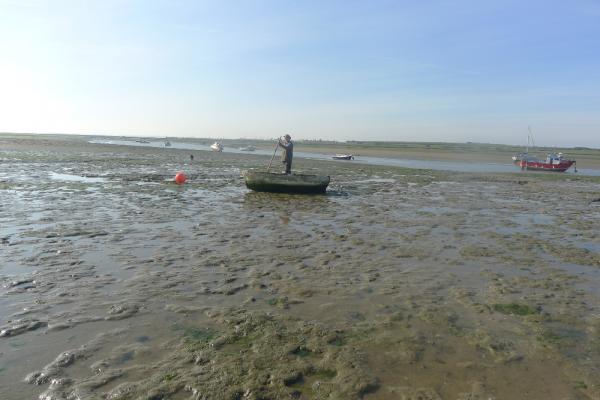
Films for and by machines

AI abandoned at sea. (Films for and by Machines #1), YoHa, 2018
Films for and by Machines is proposed as an ongoing exploration, a critical technical inquiry into automaton filmmakers asking what kinds of films would machine’s watch and make. AI abandoned at sea would be the first in a wider series of inquiries undertaken by YoHa.
Context
The science which compels the inanimate limbs of the machinery, by their construction, to act purposefully, as an automaton, does not exist in the worker’s consciousness, but rather acts upon him through the machine as an alien power. Karl Marx(1858)
The causation of Marx alienation according to the 20th Century technology critic Lewis Mumford was that machinic logics and the science that produce them refuse subjectivity which he sees as the essential human. The French Philosopher Gilbert Simondon’s writing on technical objects around the same time, saw alienation akin to a rupture in the schematic corporeality between human and machine. The machine is not considered part of the deep psychological body.
In this context artificial Intelligence is perceived as either potentially enslaving mankind with reports of 47% of Jobs being affected or it is a slave to human will, a tool, a neutral technical process. Alienation and technology within cultural and political themes place AI firmly outside of the human, but just as It makes little sense to falsely separate a bee from a hive, honeycombs or the flowers it pollinates, it makes little sense to separate humans from the machinic flowers they live in and pollinate.
Films for and by Machines, AI Abandoned as sea is a figuring of alienation, abandonment and the eerie. What happens if we reject AI and throw it overboard, cast it adrift from the human and place it in a hostile environment? How can such an act help us understand our collaboration with machines, other species and the aggregates of the earth? Without understanding the more than human that AI requestions, we have no purchase on our future, no ability to interseed, no hope to resist the slow and fast violence that result from technocratic aspiration to unconditional power.

The castaway, AI abandoned at sea.
In the Thames Estuary, the closest wilderness to London, AI is set adrift in an untidy, dilapidated, discarded boat - these plastic tenders litter the Thames Estuary aimlessly floating around for days. Five wireless cameras offer a 360 degree vision, sensors monitor the surrounding environmental conditions and are networked to a cheap computers. Isolated, alone, abandoned at sea AI independently learns what interests it. The logics that constitute interest, the choices AI will make is based on the interlinking of spare capacity in kernel process filtered by machine learning while implementing computer vision and other algorithms.(see software sketch) The project is designed to evoke the eerie, of an intelligence that is abandoned, isolated at sea, a historical place to discard things you do not wish to see again. Mark Fisher’s book the Weird and Eerie explores a strangeness evoked from the outside that reveals itself from within. He describes the eerie as an absent agency that haunts a partly inhabited landscape. Propositionally using image recognition, fog rolling in the Thames Estuary may be revealed from within computation as faces, water undulating may appear as monstrous forms or banal objects, the tide withdrawing from the shore and rising again bubbling over a bar may inspire the machine to find it’s own meanings within the tidal patterns. Seeing inside the Thames Estuary from the outside of an abandoned machine intelligence. What kind of agency is acting here? A Marie Celeste, a ghost ship that films it’s own voyage after being cast adrift by humans who refuse to accept it as one of their own?
The show, Installation
Viewers enter a room with projections on 4 walls and the ceiling showing films that the logics of machine learning and computer vision decided to record. The orientation and position data of the boat are reintroduced in the installation by using linear actuators or hydraulics to move the floor simulating the boat's movements and conditions at sea.
The build, People
The boat will be rebuilt and technology added with members of the Belton Way Small Craft Club. The clubs green hut is located on the industrial shoreline at Leigh-on-sea and it’s members average age is 70, many are retired fisherman, longshoreman, waterman who have intimate knowledge of local drift tides and weather conditions. YoHa has an extensive and well developed links to the sea peoples of Essex, Natural England, Essex Wildlife Trust, Southend-on-sea Council, Pier and Foreshore department, all of whom had previously participated in Wrecked on the Intertidal Zone.
During training of the AI a line connects the boat to the Medale families cockle boat mooring in the Ray channel where it will learn what interests it, the weather, wilderness, wildlife, global trade in the more than human Thames Estuary. Once trained the tender will be set adrift to explore its the environment, it will be remotely tracked to keep other shipping safe.
The build, 12 volt power
The entire apparatus will be powered using off-grid 12 volt marine technology, The people of the shoreline have extensive knowledge of electronics in an marine environment which is particular due to electrolysis and salt crystal build up. The automaton will generate power either using a wind mill, tide form or winged mill generator and or solar power. On board the boat is an accelerometer, compass and GPS so the computer knows it’s position and orientation while making the film. If the power runs low then the automaton film maker will sleep until it’s recharged.
The build, Software sketch
The software and cultural content will be placed in the public domain under the free software GPL license. The software/hardware will be produced in dialogue and in collaboration with Collusions partners in cambridge. The technical maritime work will be a fork OpenCPN, a non-proprietary implementation of marine computing. The computer vision will derive from OpenCV. The AI decision tree will derive from first linking Psutil (a process state utility) to a database while running computer vision and other telemetry in the system. Once the training data is complete derived from the process states. The computer will be able to decide what it films/follows with goal of using as much of it’s free capacity as possible for as long as possible while it has power. The hardware will consist of generally available devices, Raspberry Pi’s, shields, GoPro cameras.
Timeline:
January - April 2018: Software research - Hardware assembly
May - June 2018: Workshops, discussions, demonstrations with local people toward boat rebuild. Open source software and networking needed for the project. (video documentation)
June - July- 2018: Training on mooring (calm weather)
August - September 2018: Boat is set adrift (cyclonic weather)
October - November - December 2018: Workshops, discussions on findings, Installation design.
January, February, March 2019: Build installation.
 bnr#79 =>
bnr#79 =>